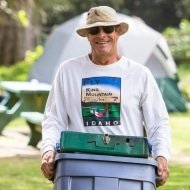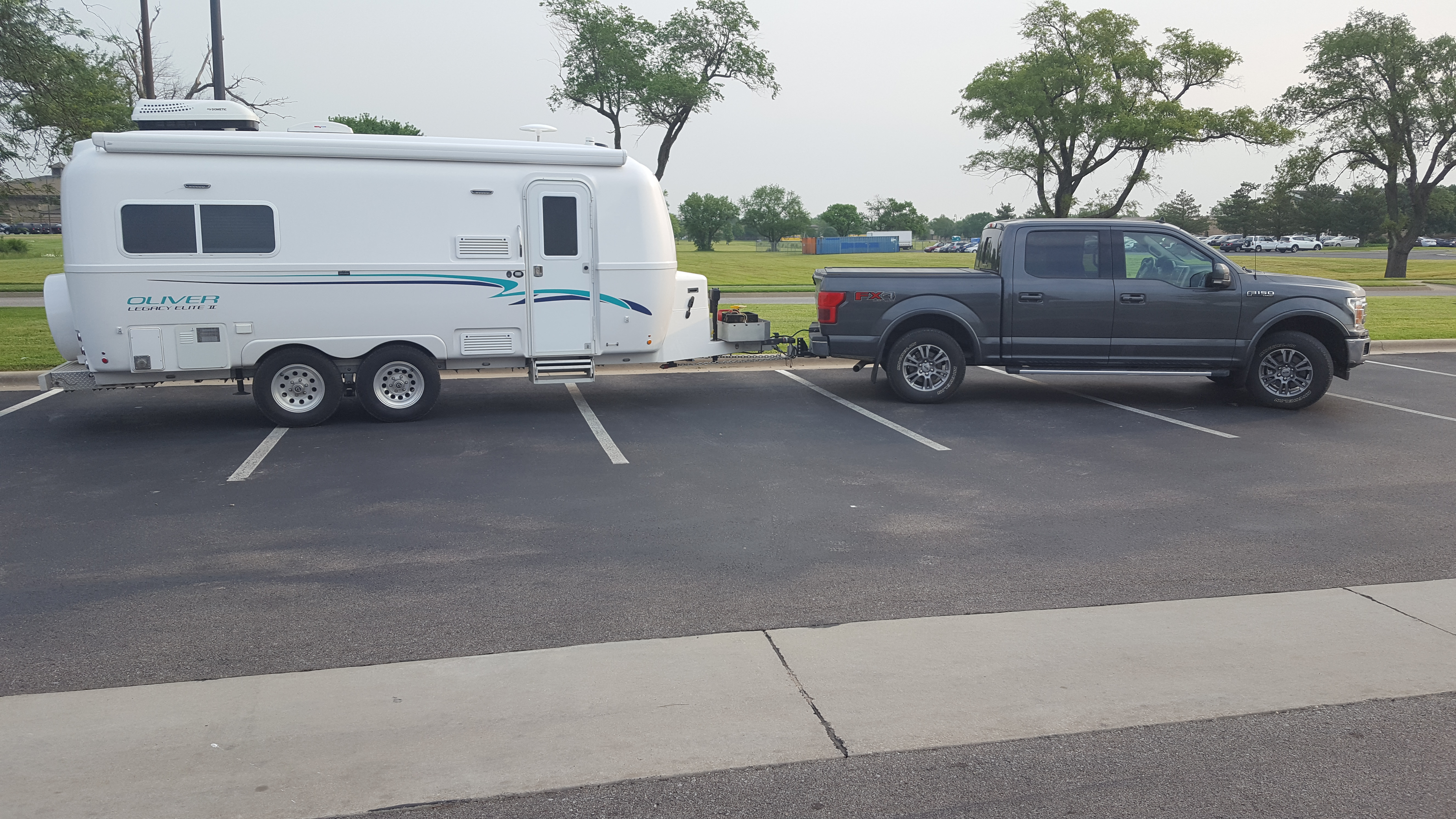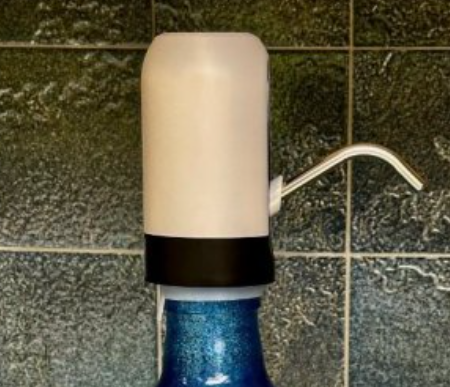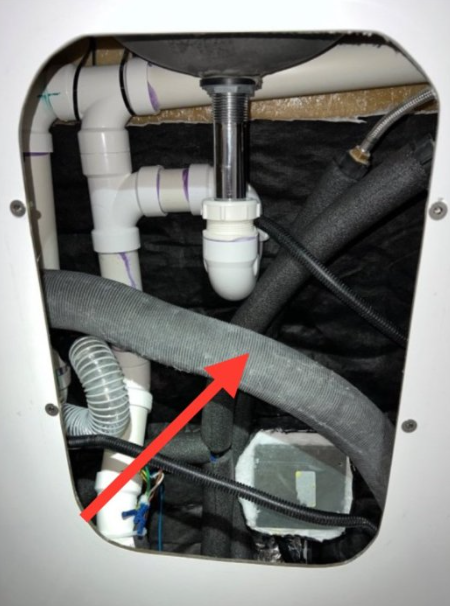-
Posts
2,053 -
Joined
-
Last visited
-
Days Won
53
Everything posted by Geronimo John
-

Draining Freshwater Tank
Geronimo John replied to Ollie Ollie in Free's topic in Mechanical & Technical Tips
OK, I'll fess up.... About half the time I forget to drain over night and end up having Ollie pee on the highway........ -
Over time, the accuracy of the SOC will drift. So, it must be "recalibrated to reality" occasionally. For mine, I do so every two weeks of use when I equalize my litho's. At that time when the voltage hits my target, after resting the litho's, if the SOC is not showing 100% I manually reset it. How you go about doing that is system dependent. Your system documentation should address this procedure. GJ PS: Note the total lack of system specific info in my post. Without your info in the signature block that's all we can do. Kindly look at several examples and add to yours as a courtesy to those of us willing and able to help you. Thank you. GJ
-
Thanks Bill. I really suggest that OTT consider upgrading the bathroom vanity area as MaxBurner documented last year. With a little bit of engineering, the cabinet space could be provided without much cost and with great benefit to future owners! Art: Would be worth sending in your Mod info to OTT in the form of a Service Ticket. That way it for sure will be discussed and consided by their Leadership Team. I'll be packing a door this summer! 🙂 GJ
-
I can agree that litho's and solar have SIGNIFICANTLY reduced the need for generators for the vast majority of OTT owners. But for true boondockers, especially winter boondocking camping, not so. GJ
-
Wow, new Ollies have insulate water lines. Also, a lot more stuff in the way of the Bathroom Vanity door mod. 😞 Is the shape of the door "teardrop" or is that just camera parallax? GJ
-

Made in USA leaf springs
Geronimo John replied to Mountainman198's topic in Mechanical & Technical Tips
Please share with us the Bulldog shock info and assessment after you get some miles on them. GJ -

Draining Freshwater Tank
Geronimo John replied to Ollie Ollie in Free's topic in Mechanical & Technical Tips
I always travel with water in the tank. Too many times stuff happens and I find we end up needing it. (Pants find a greasy Anderson ball, wife wants to stay an extra day, dirty hands from flat tire, emergency mess that needs cleaning, grand kiddo's find mud pit to play in, etc.) You are correct it is a painfully slow process to drain the fresh water tank. It should not be that slooooow. I postulate that I have poly shavings blocking the outlet. As deep as the drain valve is buried, I have not even considered trying to remove them from the tank, valve and discharge line without flooding the hull in the process. So, for draining the tank, I do it overnight before winterization the next day. GJ -

Low water pressure in bathroom
Geronimo John replied to Lisa Rae's topic in Mechanical & Technical Tips
Decalcification of your entire system should be done typically every four years. The hot water side will typically calcify faster than the cold. Is there a flow difference between your hot water flow vs. cold water flow to the bathroom? GJ -

Low water pressure in bathroom
Geronimo John replied to Lisa Rae's topic in Mechanical & Technical Tips
JD: Most of that was a joke. 🙂 Some engineers are fortunate to have the time and resources for long term project improvement efforts. Sadly, the vast majority of the engineers do not. Hopefully as we return the US economy back to that of actually making what we use, the time and resources will be available for them to do so. I believe that OTT has invested in this forum in a way as part of their quality improvement efforts. This forum and our Service Tickets are many thousands of opportunities for them to do so. And every one of the items sent their way is in fact looked at and the vast majority are resolved. I also am aware that their Quality Team is active on several of the issues we have seen in this forum discussed. So when we have a problem, those service tickets, and this forum are gold mines for their Quality efforts. That said, I could not resist the opportunity for levity with the pets, toilets and filtered drinking water crack. PS: I love dogs. Cats and Alligators not so much. -

Low water pressure in bathroom
Geronimo John replied to Lisa Rae's topic in Mechanical & Technical Tips
Likely they had an experience where an owner was filling the tank at a VERY high water pressure and flow rate. So much so that the vent line, which is quite substantial, could not handle the flow and the tank failed. Not all engineers are stupid, and OTT does things for a reason. We may not know the reason it, but they know it from experience. Yep for sure. -

Low water pressure in bathroom
Geronimo John replied to Lisa Rae's topic in Mechanical & Technical Tips
Interesting. I have not ever heard of filtering drinking water to a toilet. The previous owner must have had some really really nasty water that broke the toilet. Or maybe their pets like filtered drinking water. GJ -
Not if you were a tent camper for 67 years. It is pure pleasure! PS: I'm 6'3 225 and love our wet bath! 🙂 GJ
-
I reached out to Mike at Oliver Servce about this thread last week. GJ
-
Magnesium for sure. GJ
-

Newbies taking the plunge - Are we missing anything
Geronimo John replied to Dennis and Melissa's topic in General Discussion
Safety John says when hooking up, the TV should be off, in park, and with emergency brake set. GJ -

Newbies taking the plunge - Are we missing anything
Geronimo John replied to Dennis and Melissa's topic in General Discussion
The Anderson has about a 10 time learning curve. Once you figure it out, its easy. Here are some suggestions: First don't mess with the chain lengths or their attachment points unless you are a professional installer or super experienced in the process. Doing so will surely cause grief. So, for Hooking up the Anderson tips I have found useful: Always have both side tires chalked. Ollie going for a down hill ride by itself will be costly. And could be deadly. Save yourself grief and strive to only hook up and unhook with Ollie and TV being very straight. You figure that one out soon enough. Loosen your chain nuts full loose is a starter step. Like FULL LOOSE with half the threads of the nut showing. If you have air bags, to a point, the higher you raise the TV, the looser the chains get. Raise up, couple up, hook up whale plate, then lower to runnng height, then tighten the nuts. Having some lubricant on the whale plate and locking pins greatly eases install. I use a can of spray lithium grease on mine. Have a rag or paper towels handy. If you find stranage stains on your leg or pants .... you know where they came from. GJ -

Using a generator solely for charging the Ollie batteries
Geronimo John replied to HDRider's topic in Ollie Boondocking
However, the Yamaha has a smaller motor and will not run some A/C units with or without an EZ start as a result... despite being a 2000 watt inverter. Both the Honda 2000 EU and 2200 EU inverters will. -
-

Newbies taking the plunge - Are we missing anything
Geronimo John replied to Dennis and Melissa's topic in General Discussion
So long as you use at least one (Preferably more) boards on top of wood blocks sort of works. Sort of due to the rough surface of the jack skid plate on the softer board. For other blocks with anti-ski surfaces it is not a reliable slip plane. Here's how I believe the slip interfaces react: (Top To Bottom) The rough jack steel base on top of a board on your block is not reliablek as stated above. Your one really good slip plane is the board bottom surface to the block top surface if it is smooth. If not, it is a gamble. The block to dirt slip plane is also not reliable. In softer grounds it gets pushed into the dirt a bit. On paving, the hard bumps of the paving resist the block from moving. So, as above, this one also is not a reliable slip plane.. So with a block on a single board setup, you have one slip plane of variable reliability. However with three or more boards you have at least 2 reliable slip planes: The jack steel base to the top of board. As above this one does not count. Next you have at least two really good slip planes between the three smooth boards. As above, the board to dirt slip plane is not reliable and does not count. Having at least two good slip planes is very effective. However, if I had already purchased the blocks, I would at least carry three boards to get one effective slip plane. More if I wanted two slip planes per jack...belts and suspenders. GJ -
wow. Yep to both! Glad we got that figured out! GJ
-

Newbies taking the plunge - Are we missing anything
Geronimo John replied to Dennis and Melissa's topic in General Discussion
Blocks or boards are an important and necessary to reduce wear, damage or destruction of your jacks. The wear part has two components. First, is you don't use them as much every time you change camp sites. Less use = less wear. Secondly having the jacks on some sort of blocking reduces the lever arm of the jack to resist lateral movement and the trailer as a result will feel more steady. But MOST importantly is what happens during an OOPs (Driving off with a jack down). On multiple occasions I have seen owners of all experience levels execute the death of a jack by OOPs. If on concrete, it will kill the jack. On softer ground, the jack plate likely will dig in and kill the jack. Either way the odds are you will have a deceased jack. This can be a real PITA. But, with something between the jack and the ground, preferable at least 5" or more high, another engineering concept comes to the rescue. And that concept is called slip. In engineering, slip is a sliding displacement along a plane of one part of a system relative to the rest of the system under the action of shearing forces—that is, forces acting parallel to that plane. To greatly reduce OOPs damage to our jacks we need to add something between them and the ground to take advantage of the slip plane concept. I call thick ones blocks. Thin ones made of sections of lumber I call boards. Blocks can be purchased in lots of different sizes and materials. If I were going to go with a single block for each jack, I personally like TopGuns! Cheap, strong, and not hard to replace. Not as pretty as the Anderson's, but they are way less expensive. Blocks are also most optimal if all of your camp sites are RV Park level. But, alas we are generally boondockers and our camp sites come in all forms of not level. This is one reason why we carry a milk crate full of 2" X 6" X 11" sections of treated boards for our OE2. Here are some of the operational advantages of boards: Comparatively they are real inexpensive. Lose one and you carry on. Should long term storage bring termite damage to the bottom board of the stack, I toss a single board. The others are still useable. I can toss them around with zero worries. I can use more of less of my board sections as needed to offset unlevel camp sites. For real soft ground, I can stack two flat on the ground (side to side) and another on top 90 degrees perpendicular to them to create a double size footprint. They make great axle spacers should you have two flats or break a spring! For reasonably level camp sites, I stack three of them on top of each other to maximize height and (MOST IMPORTANTLY) to create more slip planes of safety for our jacks from an OOPs. Yes, I am also a member of the OTT Jack Drop Club. Good news is when OOPsing, you hear it thud and stop, With three jack drops in six years I have had no jack damage. So whether you use blocks or board sections either way: Slip Planes Saves Jacks! GJ -
The 2" Bulldog Coupler is rated at 7K. The 2 5/16" BD coupler is rated 12,500. The OTT OE2 Springs for years were rated at 7K. The Broke Spring post is suggesting increasing the springs to 8K. Easy to confuse what we say with so many topics in the air right now. 🙂
-
Dave Phelps post got me to thinking. After taking a “Deeper Dive” into this rabbit hole, I have to admit that my salt water/ocean air hypothesis may be all wet. Full disclosure: I am not a metallurgist but with my slide rule, I can still do some structural analysis. But in this case, I think the below interpretation may hold some water. So, this certainly is NOT an official analysis of the cause of the failure. Just the musings of a member of the OTT Rabbit Hole Investigator Team. 😊 As stated in the initial report, the top metal of the Bull Dog (BD) was still somewhat intact after failure. Had this metal also failed, we would be having a discussion about safety chains (Again). But fortunately, that was not the case and there were no injuries. Thank the Lord. Also as reported, and from the below inverted picture, we can see older damaged metal (Rusted), and at time of collapse damaged metal (Shiny white metal). This photo shows us that both sides were well compromised long before the failure event. CURB SIDE OF BD STREET SIDE OF BD But, as evident from the photo from the street side looking at the side of the BD, the street side was predominantly ripped apart during the failure event. Whereas the curb side was damaged long enough in the past to be fully rusted. TV END OF BD OLLIE END OF BD So paraphrasing Dave P's. musing: With or without the horizontal gusset how could this disparity in damage to the side metals happen? But first, let’s “Dig” into what the purpose of "The Gussett" is and likely why BD added it to their 2" couplers. Here is what they look like: The gusset is located near the juncture of the BD round pipe and U-shaped metal attached to Ollie. I believe that the purpose of a horizontal structural member (I.E. Gusset) is to reinforce the round to “U” shaped metals junction from being damaged by side horizontal loads. From the posts, it appears that older BD 2" couplings did not have this reinforcing structural member. I suspect after some lateral failures the design was beefed up to resist lateral loads by adding this gusset. When a box, round or square tube is lateral stressed by an impact load, the impacted side will go into compression and the opposite side will be stressed by tension. So historically for all BD couplers, with or without the gusset, what is the most likely event that would cause side wall cracks with such a disparity as seen above? I think a side impact load. And how would our OE2’s likely incur such an event? By a backing jackknife event where the Oliver aluminum box strikes the bumper thereby bending the BD laterally. So, as a member of the TV dented bumper owners group, I’ll be under my BullDog with a flashlight FOR SURE. For extra points, which bumper would also been damaged? Your thoughts? Geronimo John
-
Duplicate. Sorry.














